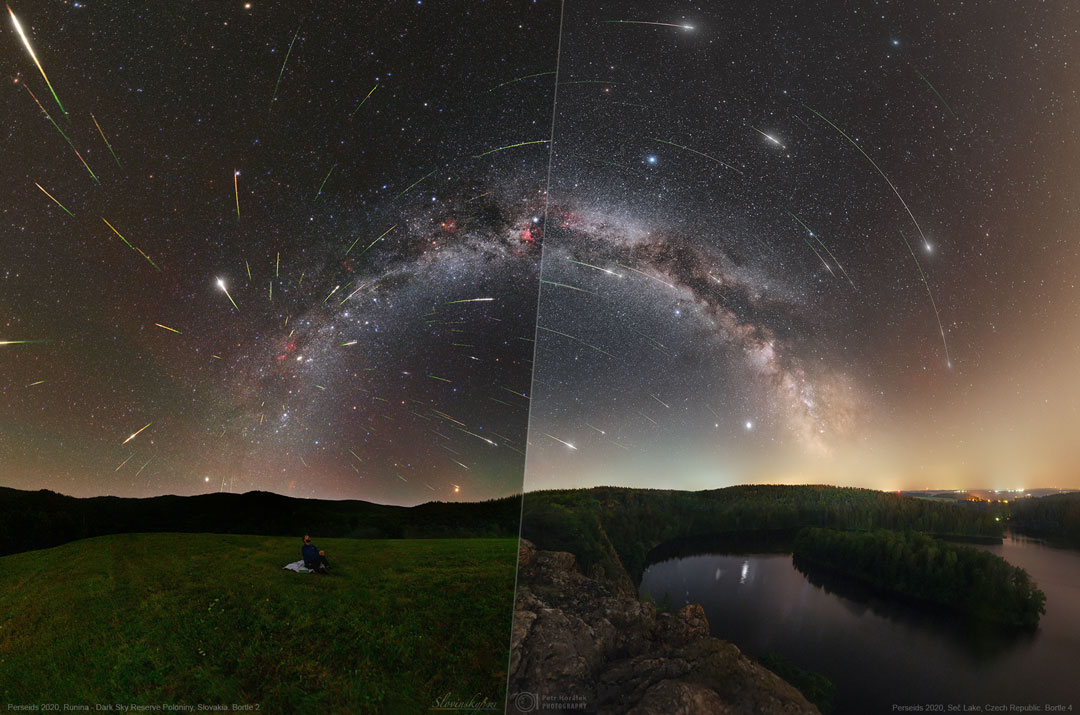2021年8月9日
Perseus and the Lost Meteors
Image Credit & Copyright: Tomas Slovinsky (Slovakia) & Petr Horalek (Czech Republic; Institute of Physics in Opava)
Explanation: What’s the best way to watch a meteor shower? This question might come up later this week when the annual Perseid Meteor Shower peaks. One thing that is helpful is a dark sky, as demonstrated in the featured composite image of last year’s Perseids. Many more faint meteors are visible on the left image, taken through a very dark sky in Slovakia, than on the right image, taken through a moderately dark sky in the Czech Republic. The band of the Milky Way Galaxy bridges the two coordinated images, while the meteor shower radiant in the constellation of Perseus is clearly visible on the left. In sum, many faint meteors are lost through a bright sky. Light pollution is shrinking areas across our Earth with dark skies, although inexpensive ways to combat this might be implemented.
Notable Perseids Submissions to APOD: 2018, 2019, 2020
Tomorrow’s picture: fire in space
英仙座流星雨和失落的流星
影像提供与版权: Tomas Slovinsky (Slovakia) & Petr Horalek (Czech Republic)
说明: 观赏流星雨的最佳方式是什么?因为今年的英仙座流星雨之极大期落在这星期,所以这个问题难免会出现。有幽暗夜空很明显的是有利的条件之一,诚如这幅摄于去年英仙流星雨期间的组合主题影像所示。与摄于暗空程度中等的捷克之右侧影像对比,在左侧有极幽暗夜空的斯洛伐克影像里,可见到很多昏暗的流星。在这二幅以银河系中央盘面对接的协同影像里,左侧可清楚见到这群流星雨位在北天英仙座的辐射点。简单的说:在明亮的夜空中,许多暗流星都隐而不见。光害不断的缩减地球各地的暗空区域,不过减缓或降低光害,其实费用并不高。
值得注意的提交给APOD的英仙座流星雨影像: 2018年、2019年、2020年
明日的图片: fire in space







